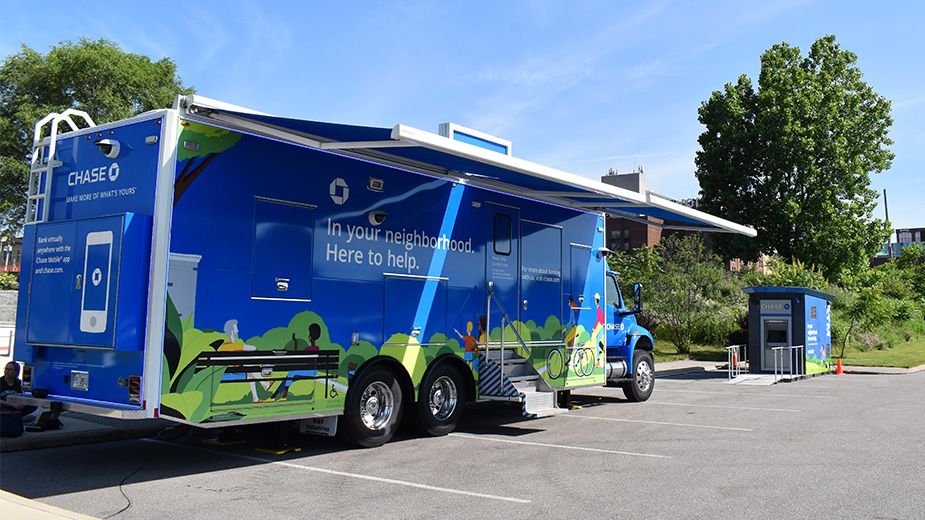Business Lending Remains Strong, Despite Doubts
YOUNGSTOWN, Ohio — Commercial lenders expect the momentum generated last year in the local market to carry through 2019, and they credit the help of the Federal Reserve softening its language on interest rate hikes and the benefits of the Tax Cuts and Jobs Act coming to fruition.
“Everybody is coming off a fairly decent year and the expectation is 2019 is going to be pretty decent,” says Stan Feret, vice president and chief lending officer for Cortland Bank.
“Rates are in an environment right now that there’s nothing prohibitive for financing new projects. We’re not expecting any major increases through ’19 and the Fed is even talking about keeping it where it’s at. A year ago at this time, you wouldn’t have been thinking that,” Feret says.
The Federal Reserve last increased rates 0.25% to a range of 2.25% to 2.50% when the Federal Open Market Committee met Dec. 19. This rate guides interest rates for banks. Previously, the Fed forecast three rate hikes this year, though many industry analysts expect there to be two.
“That sends the message to business owners that if they can afford to borrow money in today’s interest rates, they may want to do that or look at opportunities to expand,” says Chemical Bank senior commercial lender Steven Snyder, “because the cost of capital should not go up significantly throughout the year. So it gives a little more hope to the business owners.”
As for tax reform, it remains too early to tell what the full implications will be as businesses review their financial statements from 2018. But lenders expect businesses to reap the full benefits this year.
“We saw some of the benefits of the tax cut legislation taking hold in 2018 and, for the most part, it was a very healthy year with solid growth,” says Frank Hierro, Mahoning Valley regional president of Home Savings Bank. “What we haven’t seen the full impact of is what we’ll see in the tax returns and in talking to business owners. Many of them think the check they’ll have to write on April 15 will be considerably less than what it would have been otherwise.”
According to the 2019 Commercial Real Estate Finance Outlook Survey of the Mortgage Bankers Association, 74% of bankers anticipate lending activity will be the same, if not higher, than in 2018, while 26% expect a decrease. Among the industries where commercial lenders report seeing increased business are transportation, health care, agriculture and manufacturing.
Cortland Bank’s Feret reports he’s seen an uptick in equipment, tractor and trailer financing for the transportation industry and his bank is helping to fund projects relative to the skilled nursing and assisted living sectors, a trend that began last year and is continuing into this year.
At Farmers National Bank, Tim Shaffer says borrowers in the agriculture sector are adding land or structures to their farm operations, while manufacturers are adding or replacing equipment.
“We have some businesses or industries that seem to get hot, while others cool off,” says Shaffer, regional president at Farmers. “There’s enough activity that we never have no activity and so the activity that we do have drives the lending or borrowing needs.”
In regard to industries that are slow to borrow, Shaffer and Chemical Bank’s Snyder agree that hospitality has decreased from years past.
“Over the past several years, we saw so much growth in the hospitality industry that it’s pretty well slowed down now,” Snyder says. “If you drive down the street, you see a lot more new hotels and the hospitality industry is one of supply and demand.”
When it comes to the types of loan that business owners are borrowing, commercial lenders say it is across the board and they aren’t seeing any type of loan decreasing in demand, which is an indication that the economy is strong.
“The strong economy is really every company we deal with,” says Josh Toot, vice president of commercial banking for Home Savings. “Right now everybody is looking to grow, expand, replenish equipment and they’re being held back by a tight labor market. From what we hear, everybody is hiring.”
According to the U.S. Bureau of Labor Statistics, the national unemployment rate was at 4% in January, compared to 9.7% in January 2010 in the aftermath of the financial crisis.
Businesses that can’t find the skilled workers they need to expand their business are turning to automation and borrowing to purchase new equipment.
Besides a possible shortage of workers, the outlook among company owners for the economy this year seems to be optimistic and mirror that of the lenders. “Just about all of the customers we interact with are fairly positive,” says Home Saving’s Hierro. “They’re not avoiding making investment and borrowing money. They’re doing it cautiously and their outlook is good.”
Still, business owners are cautious with their borrowing needs as there are some uncertainties that remain in the macro-environment, such as a trade war with China and the possibility of another government shutdown.
The government shutdown that lasted from Dec. 22 through Jan. 25 created doubt in the market that still lingers, as business owners are aware that another is possible, the lenders say.
“People want to feel comfortable about what the future holds,” says Chemical Bank’s Snyder. “If you’re a business owner looking to the future and you have that uncertainty, it’s human nature to claw back in a little bit and say ‘I’m not ready to take that step forward.’ Any type of shutdown will affect consumer and business activity.”
But, local lenders haven’t seen any long-term effects from the last shutdown.
“The impact was really just a delay in our arena with financing,” says Farmer’s Shaffer. “We have two programs that we generally are participating in and that’s the [Small Business Administration] 7A guarantee program and the 504 loan program and [the shutdown] suspended decision making on those for a period of time. Decisions were delayed, not forgone.”
Even as the economy seems to be in a good spot right now, Shaffer says customers are still proceeding with caution. “The sense is that the economy is still good and there’s a lot of indicators that it’s still good. But there are some headwinds that we don’t know what the impact will be,” he says.
“While consumers appear to be confident, there’s two ways to look at it: How do you feel today? And how do you feel in the future? Indications are people aren’t sure because of uncertainty.”
Looking ahead at the next couple of years, Shaffer hopes the local economy will get a bump from the construction of Royal Dutch Shell ethane cracker plant in Beaver County, Pa., and the PTTGC America proposed cracker plant in Belmont County.
“Supposedly there will be a lot of activity that occurs on the Ohio River between Beaver, Pa., and East Liverpool and even further south,” he says. “We’re hopeful and optimistic that’s going to lead to a kind of economic activity that we haven’t had before.”
Copyright 2024 The Business Journal, Youngstown, Ohio.


